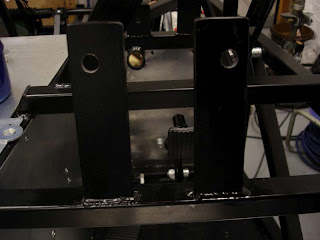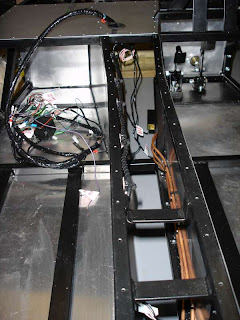
Sturdy 12mm socket head bolts were used to securely mount the upper steering column. Initially the grey plastic bush at the lower end of the upper steering column was chafing on the chassis mounted cylindrical bracket (tube). To minimise this I used a file to smooth the edge of the tube - removing a hard lip of powder coat and slightly radiusing the edge. Finally a smear of grease was added to the inside of the tube prior to assembly.

The lower steering column simply bolted in three places: to the triangular tube at the bottom of the upper steering column, the steering rack, and in the middle the rose joint bolts to one of the side chassis tubes. This rose joint mounting was left loose as it may need to be removed to install the engine. When it is ready for final assembly a thread lock solution will be used.










